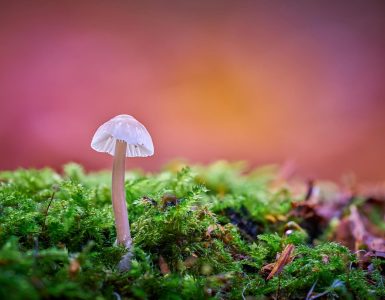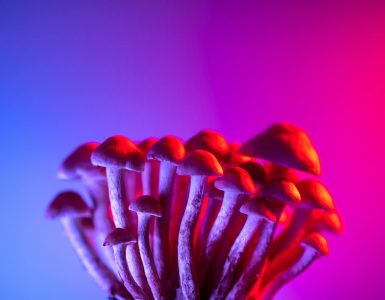Ever feel like you’ve got nature all figured out? Think again! The natural world is a mischievous prankster, constantly defying our expectations and shattering our preconceived notions. Prepare for a wild ride through some seriously mind-bending facts that prove Mother Nature is far stranger and more wonderful than we ever imagined.
Das erstaunlich soziale Faultier
We picture sloths as supremely solitary creatures, hanging around languidly in the trees. While their slow pace is undeniable, their social lives are a lot more vibrant than their reputation suggests. Recent studies on three-toed sloths have revealed surprising levels of cooperation and social interaction. They use scent-marking to communicate, maintain complex social networks, and even engage in what appears to be playful behavior. Imagine: sloths having a slow, deliberate cuddle puddle. Who knew?
Das schockierende Geheimnis des Zitteraals
Electric eels are famous for their, well, electricity. But the sheer power they wield is often underestimated. They can generate an electrical discharge of up to 600 volts—enough to knock a horse off its feet (and definitely enough to ruin your day if you’re swimming nearby). What’s even more remarkable is their sophisticated control over these discharges. They don’t just randomly zap; they can adjust the voltage for hunting, defense, and even communication, creating a complex language of electrical pulses. It’s like they’re living, breathing, underwater tasers with advanced communication skills. Wodurch wird das Nordlicht verursacht?
The Cleverness of Clever Crows
We’ve all heard of smart crows, but their intelligence is often underplayed. These feathered geniuses are capable of complex problem-solving, tool use, and even recognizing individual human faces. They can create and use tools to retrieve food— bending wires to reach treats, or using pebbles to raise the water level in a container. Some crows have even been observed exhibiting cultural learning, passing on their innovative techniques to younger members of their flock. It’s like a tiny, feathered society of brilliant inventors.
The Zombie Fungus: Nature’s Nightmarish Puppeteer
Prepare to have your mind blown (but not literally, unless you’re unfortunate enough to encounter the Ophiocordyceps fungus). This parasitic fungus infects ants, taking complete control of their bodies. The fungus manipulates the ant’s behavior, forcing it to climb to a specific height and location in the forest before killing it. From the ant’s corpse, the fungus then releases spores to infect more unsuspecting victims. This is nature’s creepiest puppet master, creating an army of undead insects, pure nightmare fuel.
Plants That Scream: The Silent Symphony of Stress
We think of plants as silent, passive organisms, but recent research suggests they may not be as quiet as we think. Under stress – from drought, injury, or attack by herbivores – some plants emit ultrasonic noises, sounds too high-pitched for human ears to register. These “screams” are subtle but detectable with sensitive equipment. This means plants are communicating in ways we’re only just beginning to understand. It’s like an entire, silent forest symphony of stress, completely imperceptible to us.
The Bioluminescent Wonders: Glowing Ecosystems Under the Sea
The deep ocean is a place of wonder and mystery, and its bioluminescent creatures add a layer of otherworldly magic. Many deep-sea species use bioluminescence – the production and emission of light – for a variety of purposes: attracting mates, luring prey, or defending themselves against predators. Imagine an ocean floor lit up by living, glowing creatures, a breathtaking underwater spectacle.
The Unexpected Resilience of Ecosystems
We tend to think of ecosystems as fragile, easily disrupted by human activity. While this is certainly true to a large extent, ecosystems also possess an incredible capacity for resilience. They can recover from disturbances, sometimes in surprising and unexpected ways. After a wildfire, for instance, certain plants may thrive in the newly enriched soil, leading to a resurgence of biodiversity. Nature’s ability to bounce back from adversity is a testament to its power and adaptability.
The Truth about the Amazon Rainforest
We often think of the Amazon as the “lungs of the planet,” producing the majority of the world’s oxygen. While it is incredibly important for the global carbon cycle, the rainforest actually produces a significant amount of its own oxygen through photosynthesis. Similarly, the Amazon’s role in global oxygen production is also frequently exaggerated in popular media; its contribution to the world’s total oxygen is not as overwhelming as people often believe, even though undoubtedly significantly important and valuable.
These are just a few examples of the many surprising truths hidden within the natural world. It’s a constant reminder that nature is far more complex, adaptable, and downright weird than we often give it credit for. The more we learn, the more we realize how much more there is to discover and appreciate. So, next time you’re in nature, remember that the seemingly familiar might be hiding some astonishing secrets – just waiting to be discovered!

























Kommentar hinzufügen